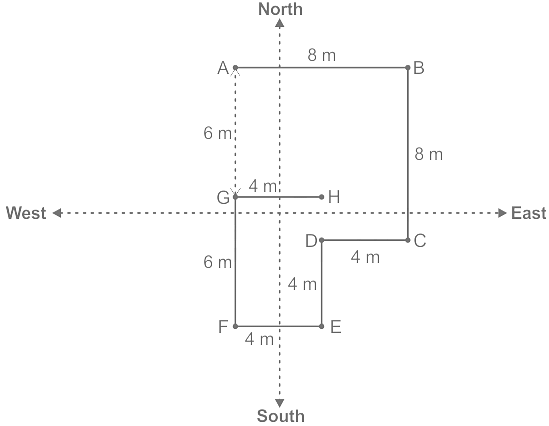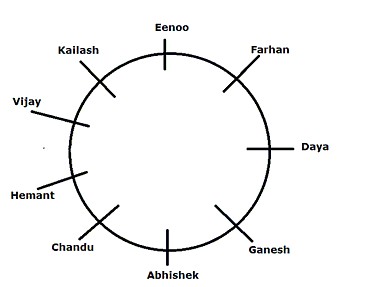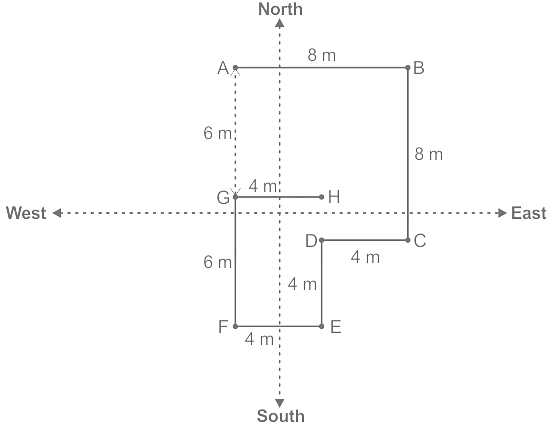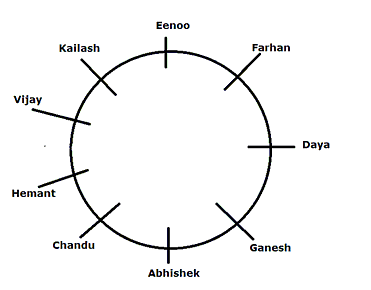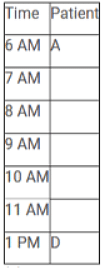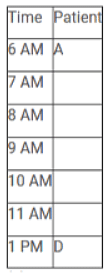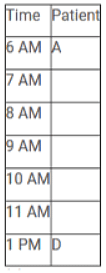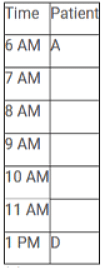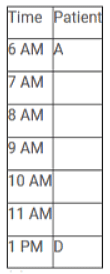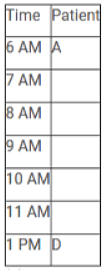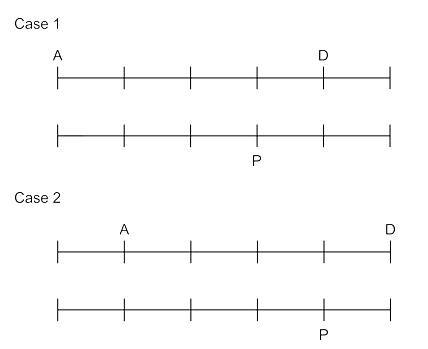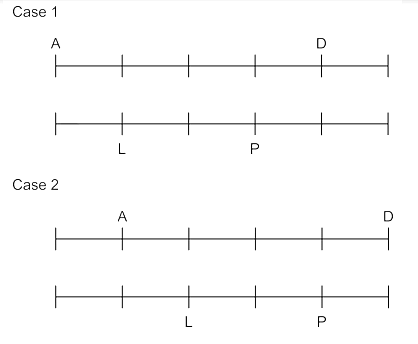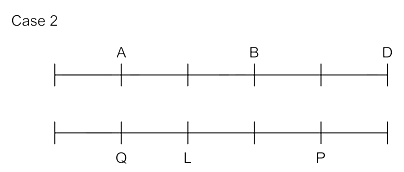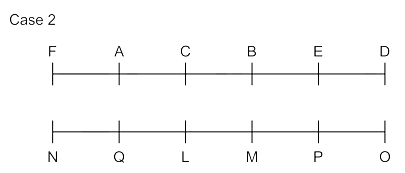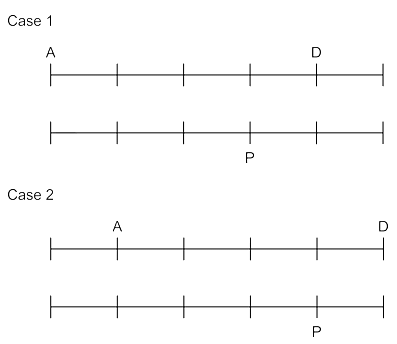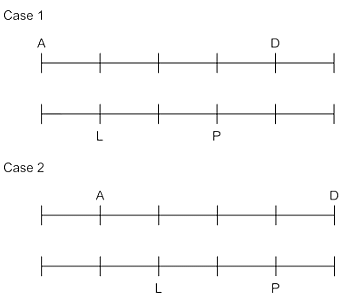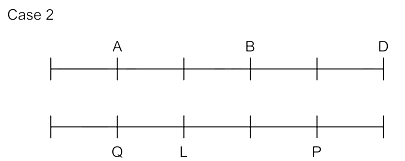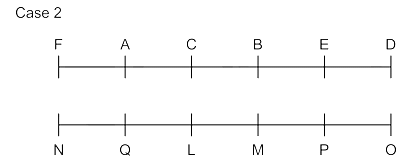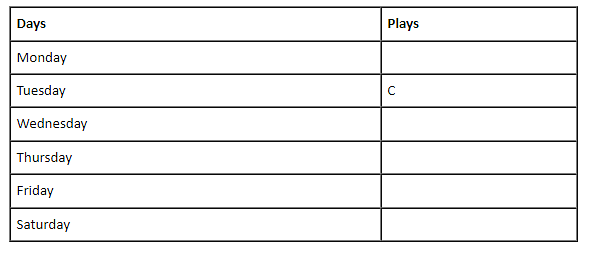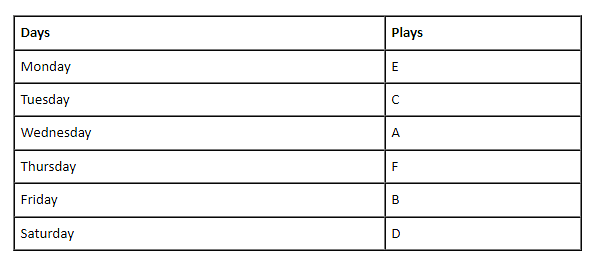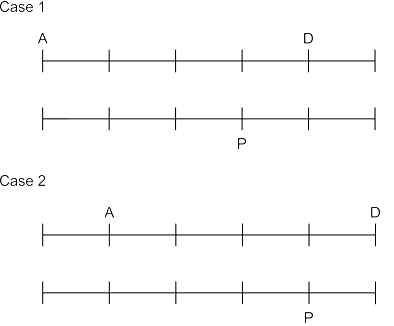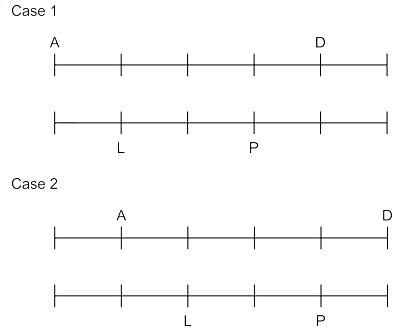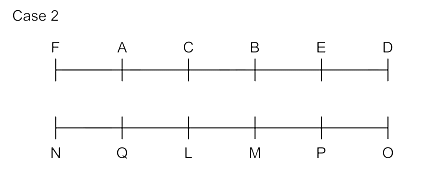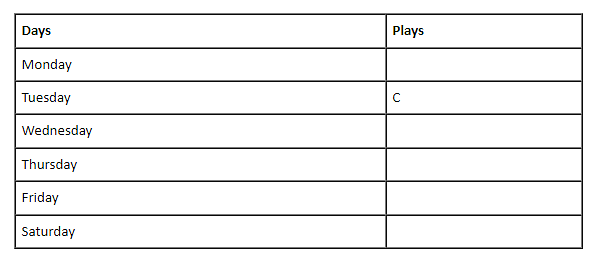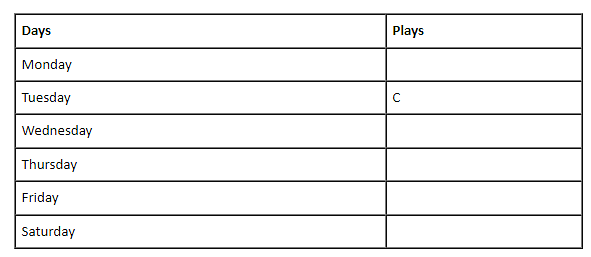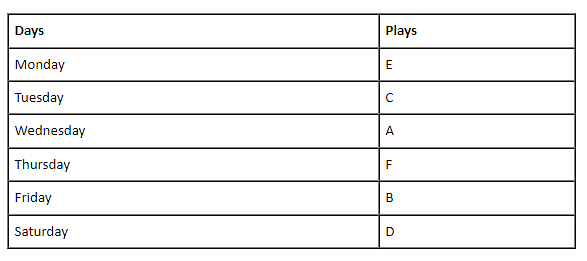IBPS SO Prelims Mock Test - 10 - Banking Exams MCQ
30 Questions MCQ Test - IBPS SO Prelims Mock Test - 10
In the following question assuming the given statements to be true, find which of the conclusion among given conclusions is/are definitely true and then give your answers accordingly.
Statement:
I < E < H; T = S < B; H > V > T
Conclusions:
I. I > V
II. H < S
III. T < B
In the question below, a statement is given, followed by two courses of action numbered I and II. A course of action is a practicable and feasible step or administrative decision to be taken for follow-up, improvement, or further action in regard to the problem, policy, etc. On the basis of the information given in the statement, you have to assume everything in the statement to be true and decide which of the suggested courses of action follow(s) for pursuing.
Statement: The scale of finance fixed by financing institutions is inadequate as farm labour has become costly.
Courses of Action:
I. It is time banks realistically determined the present employment and labour rates while providing finance.
II. It is time banks realistically determined the productivity per unit of labour employed while providing finance.
| 1 Crore+ students have signed up on EduRev. Have you? Download the App |
In the following question assuming the given statements to be true, find which of the conclusion among given Conclusions is/are definitely true and then give your answers accordingly.
Statement:
C ? H < D ? G; R ? I > F = C
Conclusions:
I. R > H
II. H < G
III. F ? H
The problem below consists a statement followed by three assumptions I, II and III. An assumption is something supposed or taken for granted. You have to consider the statement and the following assumptions, and decide which of the assumptions is/are implicit in the statement.
Statement: The two missed on the fun the same-age siblings have while growing up together.
Assumptions:
I. There is a substantial age difference between the two.
II. The two were brought up at different places.
III. The two are siblings.
The question consists of 2 statements, an assertion and a reason. The reader must determine whether each statement is true and then whether the reason holds true to the assertion.
Assertion- A. Rice is grown in clayey soil.
Reason: R. Kharif crops require a lot of water to grow.
Read the given information and answer the question.
There is a family of seven members A, B, C, D, E, F and G, who are standing in a row from left to right (the one standing at the left end is called 1st and the one standing at the right end is called 7th). Their professions are IPS Officer, Librarian, Social Worker, IAS Officer, Housewife, Commissioner and Student, not necessarily in the same order. The third person is the Housewife, D is not the Commissioner, and stands after the person who immediately follows E. A is the Social Worker. The IPS Officer stands sixth. The Librarian stands to the immediate left of the Commissioner. G stands to the immediate right of F and to the immediate left of B. E, the Student, stands fifth.
Q. Who is standing 1st?
Following questions are based on five words given below.
IAS SAE IAF NSS NLC
(The new words formed after performing the mentioned operations may or may not necessarily be meaningful English words.)
In each word of the given series, if the second and the third alphabets are arranged in English alphabetical order within the word, then in how many words the sequence of the letters will be changed?
Read the given information and answer the question.
There is a family of seven members A, B, C, D, E, F and G, who are standing in a row from left to right (the one standing at the left end is called 1st and the one standing at the right end is called 7th). Their professions are IPS Officer, Librarian, Social Worker, IAS Officer, Housewife, Commissioner and Student, not necessarily in the same order. The third person is the Housewife, D is not the Commissioner, and stands after the person who immediately follows E. A is the Social Worker. The IPS Officer stands sixth. The Librarian stands to the immediate left of the Commissioner. G stands to the immediate right of F and to the immediate left of B. E, the Student, stands fifth.
Q. Who is standing between G and A?
Following questions are based on five words given below.
IAS SAE IAF NSS NLC
(The new words formed after performing the mentioned operations may or may not necessarily be meaningful English words.)
How many letters are not repeated more than once, in the given series?
Read the given information and answer the question.
There is a family of seven members A, B, C, D, E, F and G, who are standing in a row from left to right (the one standing at the left end is called 1st and the one standing at the right end is called 7th). Their professions are IPS Officer, Librarian, Social Worker, IAS Officer, Housewife, Commissioner and Student, not necessarily in the same order. The third person is the Housewife, D is not the Commissioner, and stands after the person who immediately follows E. A is the Social Worker. The IPS Officer stands sixth. The Librarian stands to the immediate left of the Commissioner. G stands to the immediate right of F and to the immediate left of B. E, the Student, stands fifth.
Q. What is the profession of the person standing second to the left of B?
Study the information given below carefully and answer the questions that follow.
There are eight points – A, B, C, D, E, F, G and H. B is 8 m East of A. C is 8 m South of B. D is 4 m West of C. E is 4 m South of D. F is 4 m West of E. G is 6 m North of F. H is 4 m East of G.
Q. In which direction is A with respect to H?
Study the given information carefully and answer the question.
Abhishek, Vijay, Chandu, Daya, Eenoo, Farhan, Ganesh, Hemant and Kailash are sitting around a circular table facing the centre. Chandu is second to the left of Ganesh, who is fourth to the right of Vijay. Chandu is fourth to the left of Farhan and Farhan is second to the left of Kailash. Kailash is fourth to the left of Abhishek. Daya is not an immediate neighbuor of Kailash and Vijay. Hemant is third to the right of Eenoo.
Q. Who is fourth to the left of Eenoo?
Study the information given below carefully and answer the questions that follow.
There are eight points – A, B, C, D, E, F, G and H. B is 8 m East of A. C is 8 m South of B. D is 4 m West of C. E is 4 m South of D. F is 4 m West of E. G is 6 m North of F. H is 4 m East of G.
Q. What is the distance between point G and A?
Study the given information carefully and answer the question.
Abhishek, Vijay, Chandu, Daya, Eenoo, Farhan, Ganesh, Hemant and Kailash are sitting around a circular table facing the centre. Chandu is second to the left of Ganesh, who is fourth to the right of Vijay. Chandu is fourth to the left of Farhan and Farhan is second to the left of Kailash. Kailash is fourth to the left of Abhishek. Daya is not an immediate neighbuor of Kailash and Vijay. Hemant is third to the right of Eenoo.
Q. Who is sitting third to the right of Hemant?
The question below consists of a question and two statements numbered I and II given below it. You have to decide whether the data provided in the statements are sufficient to answer the question. Read both the statements and give answer.
On which date of the month was Akshita born in March 2004?
Statements:
I. Akshita was born on an even date of the month.
II. Akshita's birth date was a prime number.
(e)The data even in both statement I and II together are not sufficient to answer the question.
Follow the instructions given below and answer the question accordingly.
A word-number arrangement machine when given an input line of words and numbers, rearranges them following a particular rule. Given below is an example of input and rearrangement.
Input: tomato 72 34 hell 18 call 42 fox salt 96 potato 56
Step I: 18 tomato 72 34 hell call 42 fox salt 96 potato 56
Step II: 18 72 34 hell call 42 fox salt 96 potato 56 tomato
Step III: 18 34 72 hell call 42 fox salt 96 potato 56 tomato
Step IV: 18 34 72 hell call 42 fox 96 potato 56 tomato salt
Step V: 18 34 42 72 hell call fox 96 potato 56 tomato salt
Step VI: 18 34 42 72 hell call fox 96 56 tomato salt potato
Step VII: 18 34 42 56 72 hell call fox 96 tomato salt potato
Step VIII: 18 34 42 56 72 call fox 96 tomato salt potato hell
Step IX: 18 34 42 56 72 96 call fox tomato salt potato hell
Step X: 18 34 42 56 72 96 call tomato salt potato hell fox
Step XI: 18 34 42 56 72 96 tomato salt potato hell fox call
Since the numbers and words are already arranged, the machine stops after this step. Therefore, Step XI is the last step of the rearrangement. Otherwise, the machine may carry on its logic till the numbers get fully changed. Now, as per the rules followed in the above steps, answer the given question based on the input given below:
Q. Which of the following would be Step IV for the following input?
Input: 41 brand 8 38 drink trend 51 table 63 20 unicorn yellow
In the question below a statement is given followed by two courses of action numbered I and II. A course of action is a step or administrative decision to be taken for improvement, follow-up or further action in regard to the problem, policy, etc. Considering the information given in the statement to be true, decide which of the suggested courses of action logically follow(s) for pursuing. Statement: An employee of the National bank has been caught taking commission by a journalist.
Courses of action:
I. The Bank should pay off the journalist to stop him from making news out of the situation.
II. The employee should decline the journalist’s allegation blatantly so as to save the bank’s reputation.
Follow the instructions given below and answer the question accordingly.
A word-number arrangement machine when given an input line of words and numbers, rearranges them following a particular rule. Given below is an example of input and rearrangement.
Input: tomato 72 34 hell 18 call 42 fox salt 96 potato 56
Step I: 18 tomato 72 34 hell call 42 fox salt 96 potato 56
Step II: 18 72 34 hell call 42 fox salt 96 potato 56 tomato
Step III: 18 34 72 hell call 42 fox salt 96 potato 56 tomato
Step IV: 18 34 72 hell call 42 fox 96 potato 56 tomato salt
Step V: 18 34 42 72 hell call fox 96 potato 56 tomato salt
Step VI: 18 34 42 72 hell call fox 96 56 tomato salt potato
Step VII: 18 34 42 56 72 hell call fox 96 tomato salt potato
Step VIII: 18 34 42 56 72 call fox 96 tomato salt potato hell
Step IX: 18 34 42 56 72 96 call fox tomato salt potato hell
Step X: 18 34 42 56 72 96 call tomato salt potato hell fox
Step XI: 18 34 42 56 72 96 tomato salt potato hell fox call
Since the numbers and words are already arranged, the machine stops after this step. Therefore, Step XI is the last step of the rearrangement. Otherwise, the machine may carry on its logic till the numbers get fully changed.
Now, as per the rules followed in the above steps, answer the given question based on the input given below:
Now, as per the rules followed in the above steps, answer the given question based on the input given below:
Q. How many numbers/words are there between "28" and "84" in Step IV for the following input?
Input: rubber 28 bank 91 54 name 41 male 84 gender 40 egg
Read the following information carefully and answer the questions that follow.
There are seven patients who have different appointment timings – 6 AM, 7 AM, 8 AM, 9 AM, 10 AM, 11 AM, 1 PM. The patients are A, B, C, D, E, F, and G.
A has the earliest appointment while D has the latest appointment time. There are three people between A’s appointment time and C’s appointment time. B’s appointment time is immediately after E and immediately before F.
Q. When does D have an appointment?
Follow the instructions given below and answer the question accordingly.
A word-number arrangement machine when given an input line of words and numbers, rearranges them following a particular rule. Given below is an example of input and rearrangement.
Input: tomato 72 34 hell 18 call 42 fox salt 96 potato 56
Step I: 18 tomato 72 34 hell call 42 fox salt 96 potato 56
Step II: 18 72 34 hell call 42 fox salt 96 potato 56 tomato
Step III: 18 34 72 hell call 42 fox salt 96 potato 56 tomato
Step IV: 18 34 72 hell call 42 fox 96 potato 56 tomato salt
Step V: 18 34 42 72 hell call fox 96 potato 56 tomato salt
Step VI: 18 34 42 72 hell call fox 96 56 tomato salt potato
Step VII: 18 34 42 56 72 hell call fox 96 tomato salt potato
Step VIII: 18 34 42 56 72 call fox 96 tomato salt potato hell
Step IX: 18 34 42 56 72 96 call fox tomato salt potato hell
Step X: 18 34 42 56 72 96 call tomato salt potato hell fox
Step XI: 18 34 42 56 72 96 tomato salt potato hell fox call
Since the numbers and words are already arranged, the machine stops after this step. Therefore, Step XI is the last step of the rearrangement. Otherwise, the machine may carry on its logic till the numbers get fully changed.
Now, as per the rules followed in the above steps, answer the given question based on the input given below:
Q. In Step X for the input given, '28' is related to '41' and '54' is related to 'bank' in a certain way. Similarly, "rubber' is related to which of the following elements?
Input: rubber 28 bank 91 54 name 41 male 84 gender 40 egg
Read the following information carefully and answer the questions that follow.
There are seven patients who have different appointment timings – 6 AM, 7 AM, 8 AM, 9 AM, 10 AM, 11 AM, 1 PM. The patients are A, B, C, D, E, F, and G.
A has the earliest appointment while D has the latest appointment time. There are three people between A’s appointment time and C’s appointment time. B’s appointment time is immediately after E and immediately before F.
Q. Whose appointment is at 7 AM?
Study the following information carefully to answer the question.
Seven friends F, H, J, K, L, M and P are working in different cities viz. Chennai, Mumbai, Bangalore, Jaipur, Indore, Ahmedabad and Hyderabad, not necessarily in the same order. Each one of them has a different profession viz. C.A, Doctor, Professor, Engineer, Banker, Lawyer and Architect, not necessarily in the same order. H is a Lawyer and he works in Jaipur. K is a Doctor and he does not work in Chennai. The C.A. works in Mumbai. M works in Indore. The Architect works in Hyderabad. L is a Banker and he works in Bangalore. F is an Engineer. J does not work in Mumbai.
Q. Which of the following combinations of person, profession and city is definitely correct?
Study the following information carefully to answer the given questions.
Twelve people are sitting in a two parallel rows containing six people each in such a way that there is an equal distance between adjacent persons. In row 1 – A, B, C, D, E and F are seated (but not necessarily in the same order) and all of them are facing south. In row 2 – L, M, N, O, P and Q are seated (but not necessarily in the same order) and all of them are facing north. Therefore in the given seating arrangement each member seated in a row faces another member of the other row.
The one facing A sits third to the left of P. D sits fourth to the left of A. The one facing Q sits second to the right of B. Only two people sit between B and F. Only one person sits between P and L. The one facing B sits second to the left of O. M is not an immediate neighbour of Q. Q does not sit at any of the extreme ends of the line. C is not immediate neighbour of D. L does not sit at any of the extreme ends of the line.
Q. Which of the following is true with respect to the given information?
Study the following information carefully to answer the question.
Seven friends F, H, J, K, L, M and P are working in different cities viz. Chennai, Mumbai, Bangalore, Jaipur, Indore, Ahmedabad and Hyderabad, not necessarily in the same order. Each one of them has a different profession viz. C.A, Doctor, Professor, Engineer, Banker, Lawyer and Architect, not necessarily in the same order. H is a Lawyer and he works in Jaipur. K is a Doctor and he does not work in Chennai. The C.A. works in Mumbai. M works in Indore. The Architect works in Hyderabad. L is a Banker and he works in Bangalore. F is an Engineer. J does not work in Mumbai.
Q. The Engineer works in which city?
Study the following information carefully to answer the given questions.
Twelve people are sitting in a two parallel rows containing six people each in such a way that there is an equal distance between adjacent persons. In row 1 – A, B, C, D, E and F are seated (but not necessarily in the same order) and all of them are facing south. In row 2 – L, M, N, O, P and Q are seated (but not necessarily in the same order) and all of them are facing north. Therefore in the given seating arrangement each member seated in a row faces another member of the other row.
The one facing A sits third to the left of P. D sits fourth to the left of A. The one facing Q sits second to the right of B. Only two people sit between B and F. Only one person sits between P and L. The one facing B sits second to the left of O. M is not an immediate neighbour of Q. Q does not sit at any of the extreme ends of the line. C is not immediate neighbour of D. L does not sit at any of the extreme ends of the line.
Q. Which of the following is true regarding E?
Study the given information to answer the following question.
Six plays A, B, C, D, E and F are to be staged on six days of the week starting from Monday and ending on Saturday. Play C is staged on Tuesday. Plays A, F and B are staged one after the other in the same order. Play D is not staged on Monday or Wednesday.
Q. How many plays are staged after play A?
Study the following information carefully to answer the given questions.
Twelve people are sitting in a two parallel rows containing six people each in such a way that there is an equal distance between adjacent persons. In row 1 – A, B, C, D, E and F are seated (but not necessarily in the same order) and all of the are facing south. In row 2 – L, M, N, O, P and Q are seated (but not necessarily in the same order) and all of them are facing north. Therefore in the given seating arrangement each member seated in a row faces another member of the other row.
The one facing A sits third to the left of P. D sits fourth to the left of A. The one facing Q sits second to the right of B. Only two people sit between B and F. Only one person sits between P and L. The one facing B sits second to the left of O. M is not an immediate neighbour of Q. Q does not sit at any of the extreme ends of the line. C is not immediate neighbour of D. L does not sit at any of the extreme ends of the line.
Q. Which of the following groups of people represents the people sitting at extreme ends of both the rows?
Study the given information to answer the following question.
Six plays A, B, C, D, E and F are to be staged on six days of the week starting from Monday and ending on Saturday. Play C is staged on Tuesday. Plays A, F and B are staged one after the other in the same order. Play D is not staged on Monday or Wednesday.
Q. Which play is staged on the day immediately before the day play E is staged?
In each question below is given one/more statements that are followed by two assumptions numbered I and II. Consider the statement and decide which of the given assumptions is implicit.
Statements: Automobile dealers have started focusing on semi-urban areas, since the traffic havoc in cities have disgraced their sales.
Assumptions:
I. People in cities are avoiding owning vehicles due to traffic troubles.
II. Semi-urban places are being more profitable than cities in terms of car sales.
Study the given information to answer the following question.
Six plays A, B, C, D, E and F are to be staged on six days of the week starting from Monday and ending on Saturday. Play C is staged on Tuesday. Plays A, F and B are staged one after the other in the same order. Play D is not staged on Monday or Wednesday.
Q. Which play is staged on Thursday?





